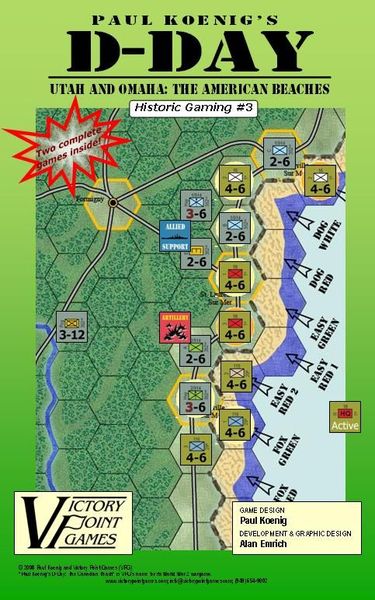Paul Koenig’s D-Day: Utah and Omaha – The American Beaches (2008) Board Game
Paul Koenig’s D-Day: Utah and Omaha – The American Beaches is a wargame that focuses on the American landings at Utah Beach and Omaha Beach during the D-Day invasion of Normandy in World War II. Designed by Alan Emrich and published by Victory Point Games in 2008, the game offers a strategic and historically accurate simulation of the events that unfolded on June 6, 1944.
Game Components of Paul Koenig’s D-Day: Utah and Omaha – The American Beaches
How To Setup Paul Koenig’s D-Day: Utah and Omaha – The American Beaches
Setting up the game involves placing the maps of Utah and Omaha beaches, deploying the Allied and German units according to the scenario rules, and organizing the counters and player aids. Players must ensure all units are correctly positioned on the hex grid, reflecting the historical deployment of forces during D-Day. The rulesbook provides detailed instructions for each step of the setup process.
Gameplay Mechanics and Game Objective
Player Experience
Players are immersed in the intense and strategic environment of D-Day, managing units and resources to replicate the historical battles on Utah and Omaha beaches. The game demands careful planning, tactical execution, and adaptation to changing circumstances, mirroring the chaos and complexity of real combat.
Pros
Cons
Personal Thoughts on Paul Koenig’s D-Day: Utah and Omaha – The American Beaches
This game is ideal for history enthusiasts and experienced wargamers who appreciate detailed historical simulations. It offers a rich and challenging experience, particularly for those interested in the strategic and tactical aspects of the D-Day landings. However, due to its complexity and learning curve, it may not be the best fit for casual gamers or those new to wargames.
We are supported by our audience. When you purchase through links on our site, we may earn an affiliate commission, at no extra cost for you. Learn more.

